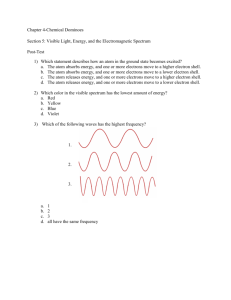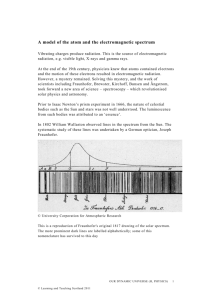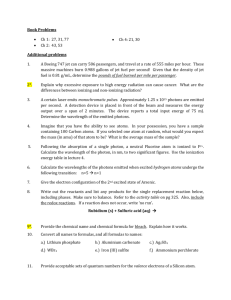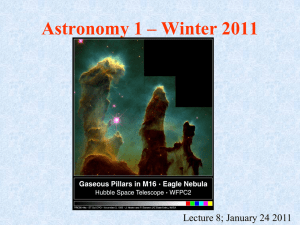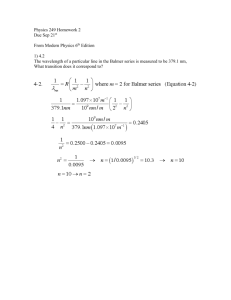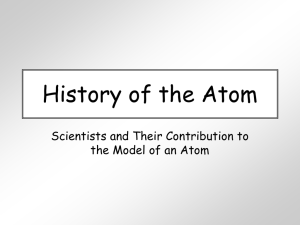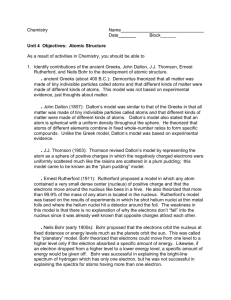Notes - Quantized Energy States (Bohr) Handout
advertisement
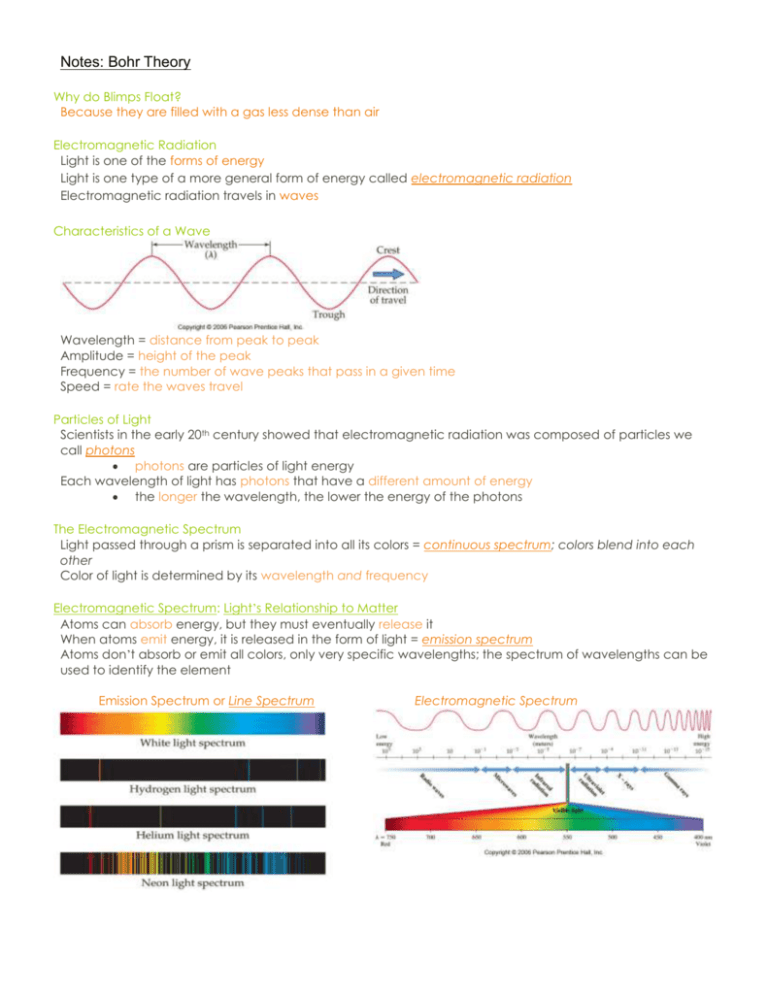
Notes: Bohr Theory Why do Blimps Float? Because they are filled with a gas less dense than air Electromagnetic Radiation Light is one of the forms of energy Light is one type of a more general form of energy called electromagnetic radiation Electromagnetic radiation travels in waves Characteristics of a Wave Wavelength = distance from peak to peak Amplitude = height of the peak Frequency = the number of wave peaks that pass in a given time Speed = rate the waves travel Particles of Light Scientists in the early 20th century showed that electromagnetic radiation was composed of particles we call photons photons are particles of light energy Each wavelength of light has photons that have a different amount of energy the longer the wavelength, the lower the energy of the photons The Electromagnetic Spectrum Light passed through a prism is separated into all its colors = continuous spectrum; colors blend into each other Color of light is determined by its wavelength and frequency Electromagnetic Spectrum: Light’s Relationship to Matter Atoms can absorb energy, but they must eventually release it When atoms emit energy, it is released in the form of light = emission spectrum Atoms don’t absorb or emit all colors, only very specific wavelengths; the spectrum of wavelengths can be used to identify the element Emission Spectrum or Line Spectrum Electromagnetic Spectrum Line Spectra = specific wavelengths are emitted; characteristic of atoms The Bohr Model of the Atom Nuclear Model of atom does not explain how atom can gain or lose energy Neils Bohr developed a model to explain how structure of the atom changes when it undergoes energy transitions Bohr postulated that energy of the atom was quantized, and that the amount of energy in the atom was related to the electron’s position in the atom Quantized: means that the atom could only have very specific amounts of energy In the Bohr Model, electrons travel in orbits or energy levels around the nucleus The farther the electron is from the nucleus the more energy it has Quantized Energy States Hydrogen Spectrum Series The Bohr Model of the Atom: Orbits and Energy Each orbit (energy level) has a specific amount of energy Energy of each orbit is symbolized by n, with values of 1, 2, 3 etc; the higher the value the farther it is from the nucleus and the more energy an electron in that orbit has The Bohr Model of the Atom: Energy Transitions Electrons can move from a lower to a higher (farther from nucleus) energy level by absorbing energy When the electron moves from a higher to a lower (closer to nucleus) energy level, energy is emitted from the atom as a photon of light The Bohr Model of the Atom: Ground and Excited States Ground state – atoms with their electrons in the lowest energy level possible; this lowest energy state is the most stable. Excited state – a higher energy state; electrons jump to higher energy levels by absorbing energy

